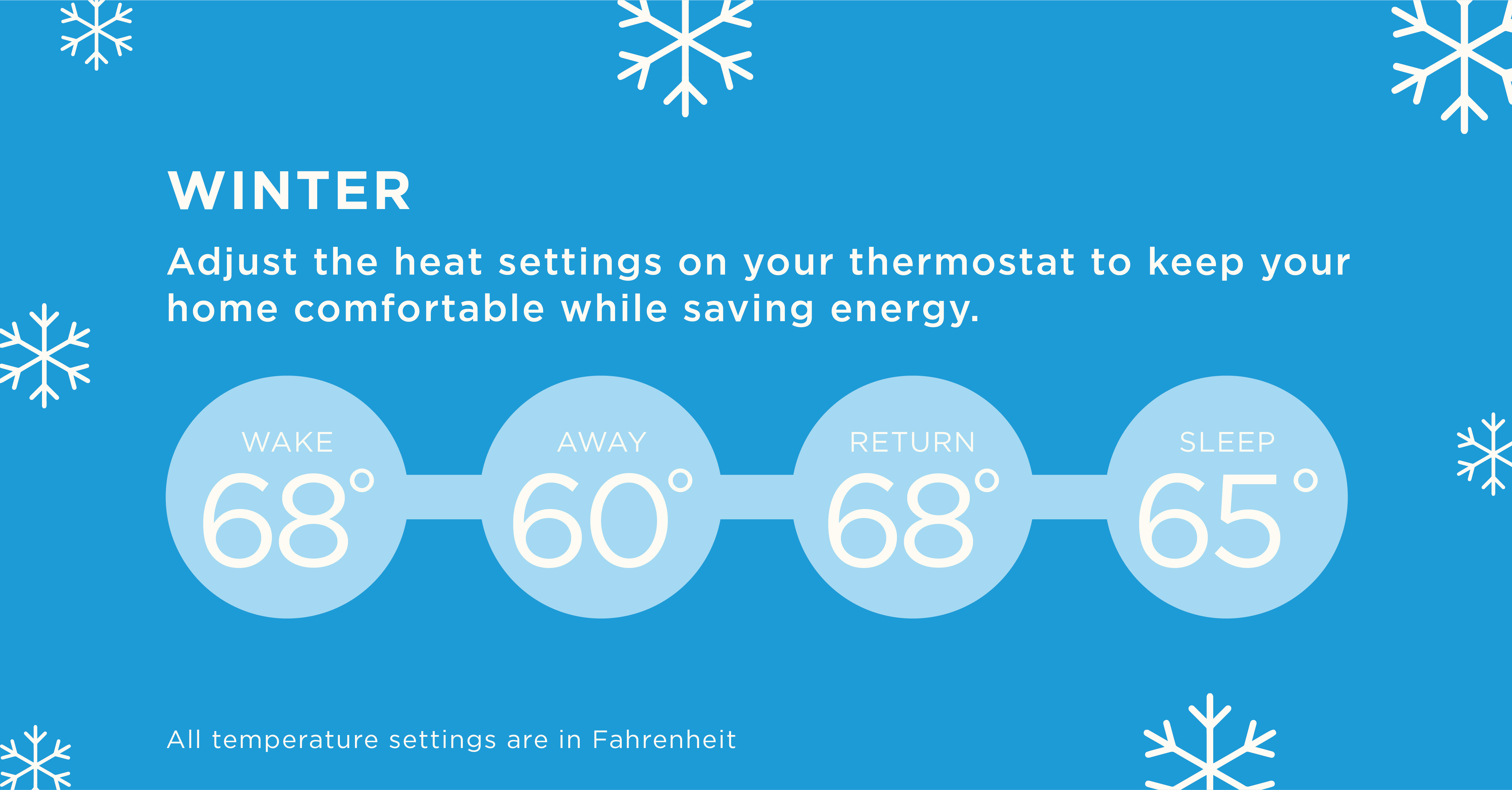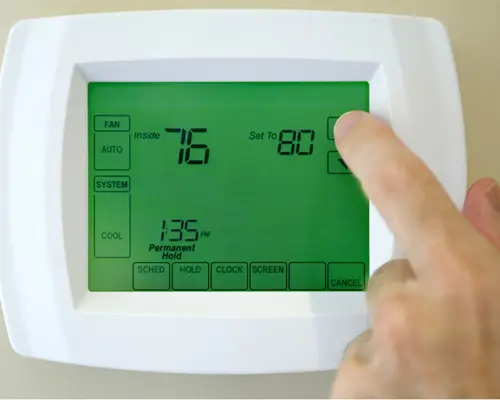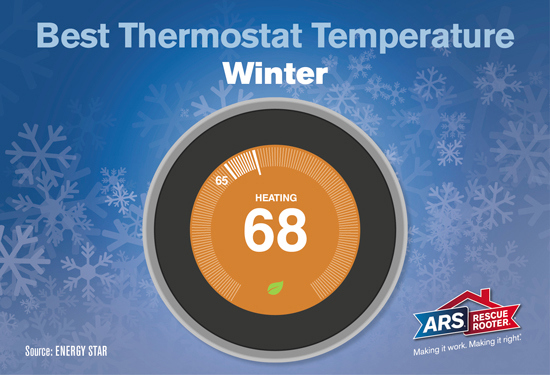Check Best Thermostat Pricing in Amazon
** As an Amazon Associate, I earn from qualifying purchases.
Setting your thermostat in winter can be confusing. What’s the best temperature for comfort and energy savings?
Finding the right temperature can make a big difference. It keeps your home cozy and your energy bills in check. Too high, and you’re wasting money. Too low, and you might be uncomfortable. Many factors come into play, like personal preference and insulation.
Understanding these can help you make an informed choice. This guide will explore the ideal thermostat settings for winter. You’ll learn how to balance warmth and efficiency. By the end, you’ll know the perfect temperature for your home this winter. Stay warm and save money with these tips. Let’s dive in!

Credit: www.scanaenergy.com
- Introduction To Winter Thermostat Settings
- Ideal Daytime Temperature
- Nighttime Temperature Adjustments
- Temperature Settings For Different Rooms
- Using Programmable Thermostats
- Balancing Comfort And Energy Savings
- Health Considerations
- Additional Tips For Winter Heating
- Frequently Asked Questions
- Conclusion
Introduction To Winter Thermostat Settings
Finding the perfect winter thermostat setting can save money and keep your home cozy. Aim for 68 degrees Fahrenheit during the day for comfort. Lowering it at night can further reduce energy costs.
### Introduction to Winter Thermostat Settings As the winter chill sets in, finding the perfect thermostat setting becomes a priority. You want to stay warm without breaking the bank on energy bills. But what temperature is just right? Let’s dive into the key factors to consider.Importance Of Proper Settings
Setting your thermostat correctly is vital. It directly affects your comfort and wallet. A too-high setting can lead to overheating and high energy costs. A too-low setting might leave you shivering. Consider your daily routine. Are you home all day or mostly out? Adjusting the thermostat based on your schedule can make a big difference. Smart thermostats can help you manage these settings efficiently.Impact On Comfort And Energy Bills
The right thermostat setting balances comfort and cost. The Department of Energy suggests 68 degrees Fahrenheit while you’re awake and at home. Lower it when you’re asleep or away. Think about this: lowering your thermostat 10-15 degrees for 8 hours can save 5-15% a year on heating. That’s significant savings! Plus, you’ll still be cozy with warm blankets or a good sweater. Don’t forget to check for drafts. Proper insulation ensures your heating system works efficiently. This means your home stays warm without overworking your heater.Finding the sweet spot for your winter thermostat setting doesn’t have to be a guessing game. With a few adjustments and considerations, you can stay warm and save money. What changes will you make to your thermostat settings this winter?
Ideal Daytime Temperature
Setting the right temperature for your home during the winter can be a bit of a challenge. You want to keep your living space cozy without seeing your energy bills skyrocket. Finding the ideal daytime temperature is key to balancing comfort and cost. Let’s break down the recommended range and factors affecting your choice.
Recommended Range
Experts suggest keeping your thermostat between 68°F and 72°F during the day. This range ensures comfort while avoiding excessive energy consumption. If you are used to a warmer environment, start at 72°F and gradually lower it by one degree each day. You’ll be surprised at how quickly your body adjusts.
Remember, each degree you lower can save up to 3% on heating costs. That’s a significant saving over the winter months. Try wearing a sweater or using a blanket to stay warm instead of cranking up the heat.
Factors Affecting Choice
Your ideal temperature may vary depending on several factors. Consider the insulation of your home. Well-insulated houses retain heat better, allowing you to set a lower temperature comfortably.
Think about the number of people in your home. More people generate more body heat, which can help warm the space. If your home is bustling, you might find 68°F perfectly comfortable.
Also, take into account your personal preferences and health conditions. Some people feel colder due to medical reasons and might need a warmer setting. Always choose a temperature that keeps you comfortable and healthy.
What temperature do you find most comfortable during the day? Have you noticed any significant changes in your energy bills when you adjust your thermostat? Share your thoughts and experiences in the comments!
Nighttime Temperature Adjustments
Nighttime temperature adjustments can lead to better sleep and energy savings. Lowering the thermostat before bed can make a big difference in your comfort and utility bills. Let’s explore the benefits and suggested settings for nighttime temperature adjustments.
Benefits Of Lowering Temperature
Lowering the temperature at night helps your body cool down. This can improve sleep quality. A cooler room can reduce the risk of overheating, leading to more restful sleep. It can also help save on heating costs. By setting the thermostat lower, you use less energy. This can reduce your monthly bills.
Suggested Settings
Experts suggest setting the thermostat between 60 and 67 degrees Fahrenheit. This range is ideal for most people. It promotes better sleep and energy efficiency. If you find this range too cold, consider using extra blankets. Adjusting the temperature by a few degrees can still make a difference. Experiment with settings to find what works best for you.

Credit: www.ars.com
Temperature Settings For Different Rooms
Choosing the right temperature settings for different rooms in your home can enhance comfort and save energy. Each room serves a unique purpose, so it makes sense to adjust the thermostat accordingly.
Living Areas
The living room is where families spend most of their time. Aim for a temperature of 68-72°F during the day. This range ensures comfort without wasting energy. If you have guests, you may prefer a slightly warmer setting.
Bedrooms
Bedrooms require different settings for optimal sleep. Set the thermostat to 60-67°F at night. Cooler temperatures promote better sleep quality. Use blankets for extra warmth if needed.
Unused Spaces
Unused rooms don’t need the same warmth as active spaces. Set the thermostat to 50-55°F in these areas. This prevents pipes from freezing while saving energy. Close doors to these rooms to contain the heat in used spaces.
Using Programmable Thermostats
Set your thermostat to 68°F during the day in winter for comfort. Lower it by 10-15 degrees at night. This helps save energy while keeping your home cozy.
Setting your thermostat to the right temperature in winter can be a tricky task. A programmable thermostat can be a game-changer. It gives you control over your home’s climate with minimal effort. Imagine waking up to a warm house without lifting a finger. Sounds great, right? Let’s dive into the benefits and learn how to use one effectively.Advantages
Programmable thermostats offer several advantages. They can save you money by reducing energy usage. You can set different temperatures for when you are home, asleep, or away. Convenience is another perk. You won’t have to constantly adjust the thermostat. Just set it once, and it takes care of the rest. They also add comfort. Your home can be warm when you wake up and cool down when you leave. This ensures you are always comfortable without wasting energy.How To Program
Programming your thermostat is easier than you might think. Start by setting the temperature for when you wake up. Most people prefer around 68°F in the winter. Next, set it for when you leave the house. Lowering it by 10 degrees can save on heating costs. You won’t need the house as warm if no one is home. Set another temperature for when you return. A slight increase will make the house comfortable again. Finally, set it for when you go to bed. Lowering it a bit can help you sleep better. Have you ever considered how much energy you could save with a simple change? Try adjusting your thermostat and see the difference it makes. You’ll be surprised at how much more efficient your home can be with a programmable thermostat.Balancing Comfort And Energy Savings
Finding the perfect balance between comfort and energy savings during winter can be a bit tricky. You want to stay warm without skyrocketing your energy bill. But don’t worry, with a few adjustments, you can achieve both.
Strategies For Efficiency
Start by setting your thermostat to a temperature that feels comfortable but not overly warm. Generally, 68°F (20°C) is a good starting point. If you feel chilly, try adding an extra layer of clothing or using blankets before cranking up the heat.
Consider investing in a programmable thermostat. This allows you to lower the temperature when you’re not home or while you’re sleeping, and automatically raise it before you wake up or return. This simple change can lead to substantial savings over time.
Another smart move is to utilize natural sunlight. Open your curtains during the day to let the sun warm your home, and close them at night to keep the warmth in. It’s a free and effective way to maintain a cozy indoor temperature.
Check Best Thermostat Pricing in Amazon
** As an Amazon Associate, I earn from qualifying purchases.
Common Mistakes To Avoid
Avoid setting your thermostat too high in an attempt to heat your home faster. Thermostats work at a consistent rate, so this tactic won’t help and will only waste energy. Instead, be patient and let your heating system do its job.
Don’t neglect regular maintenance of your heating system. A well-maintained system runs more efficiently and saves you money. Make sure to replace filters regularly and schedule annual check-ups to keep everything in top shape.
Lastly, don’t forget to seal leaks and insulate your home properly. Drafts can significantly reduce the efficiency of your heating system. Use weather stripping, caulking, and insulation to prevent warm air from escaping and cold air from entering.
Have you tried any of these strategies? How did they work for you? Share your experiences in the comments below!
Health Considerations
During winter, finding the right thermostat setting is not just about comfort. It’s also about your health and well-being. Let’s dive into how temperature settings can affect your health and how you can maintain good air quality in your home.
Effects Of Temperature On Health
Temperature plays a crucial role in how you feel and function daily. Setting your thermostat too low can lead to various health issues. Cold temperatures can cause your blood pressure to rise, which is not ideal for those with heart conditions.
On the other hand, a home that is too warm can lead to dehydration and overheating. This can make you feel sluggish and tired. It’s essential to find a balance that keeps you comfortable and healthy.
Experts suggest setting your thermostat between 68-72°F during the day when you are home. At night, lowering it slightly to around 60-67°F can help you sleep better. Everyone is different, so adjust the temperature to what feels best for you and your family.
Maintaining Air Quality
Temperature isn’t the only factor to consider for your health during winter. Air quality is equally important. Running your heating system can dry out the air, leading to respiratory issues and dry skin.
Using a humidifier can help maintain the right level of humidity in your home. Aim for a humidity level between 30-50%. This can reduce the risk of respiratory problems and keep your skin hydrated.
Regularly changing your HVAC filters can also improve air quality. Dirty filters can circulate dust, allergens, and bacteria, which can worsen asthma and allergies. Set a reminder to change your filters every 1-3 months, depending on usage.
Have you noticed how your home feels stuffy sometimes? Opening windows for just a few minutes can bring in fresh air and improve indoor air quality. Even in winter, a little fresh air can make a big difference.
What steps will you take this winter to ensure a healthy and comfortable home environment? Small changes can have a significant impact on your health and well-being.
Additional Tips For Winter Heating
Keeping your home warm during winter is essential. It ensures comfort and prevents cold-related problems. But, setting the right thermostat temperature is just one part. There are other ways to help maintain warmth and efficiency.
Insulation And Sealing
Good insulation keeps the warm air inside. Check your walls, attic, and floors. Make sure they have proper insulation. This reduces heat loss and keeps your home warm longer. Sealing gaps and cracks is also important. Look around windows and doors. Use weather stripping or caulk to seal any gaps. This prevents cold drafts from entering your home.
Regular Maintenance
Regular maintenance keeps your heating system working well. Schedule an annual check-up with a professional. This can help identify and fix any issues early. Change your air filters regularly. Dirty filters reduce efficiency and increase energy use. Keep vents and radiators clean and unblocked. This allows heat to circulate properly. A well-maintained system works better and lasts longer.

Credit: www.ars.com
Frequently Asked Questions
What Is The Cheapest Temperature To Keep Your House In Winter?
Set your thermostat to 68°F (20°C) during the day for the cheapest winter heating. Lower it at night for more savings.
Is 72 Too High For A Thermostat In Winter?
A thermostat set to 72°F in winter is generally comfortable. It may be high for energy savings. Adjust based on personal comfort and energy efficiency goals.
What Should I Set My Thermostat To In Winter At Night?
Set your thermostat to 60-67°F (15-19°C) at night in winter for optimal comfort and energy savings.
Is 75 A Good Temperature For Heat In The Winter?
Yes, 75°F is generally considered a good temperature for heating in the winter. It provides comfort and warmth.
Conclusion
Setting your thermostat correctly in winter saves money and energy. Aim for 68°F when you’re home. Lower it at night or when you’re away. Use blankets and warm clothes to stay comfortable. These small changes can make a big difference.
Keep your home cozy without high bills. Follow these tips for an efficient and warm winter season. Stay warm and save energy with the right thermostat settings.
Check Best Thermostat Pricing in Amazon
** As an Amazon Associate, I earn from qualifying purchases.

